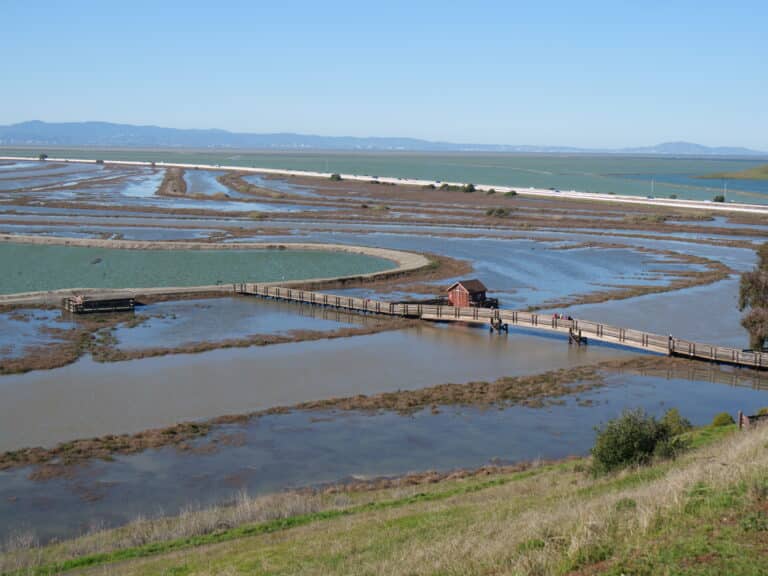San Francisco Bay: A Wetland Ecosystem of International Importance
The San Francisco Bay Estuary is the largest estuary on the west coast of both Americas. Estuarine intertidal and shallow waters support tremendous biodiversity, including rare, listed, migratory and economically important species, and serve as nurseries for fisheries.
San Francisco Bay has been recognized as a “Wetland of International Importance” by UNESCO’s Ramsar Convention on Wetlands. It has been identified as a Hemispheric Reserve for shorebirds by the Western Hemispheric Shorebird Reserve Network, the Network’s highest ranking. The Network states that, “San Francisco Bay holds higher proportions of the total wintering and migrating shorebirds on the U.S. Pacific coast than any other wetland.”
The Bay supports hundreds of thousands of migratory waterfowl every year and has been designated an Area of Continental Significance by the North American Waterfowl Conservation Plan, and an Important Bird Area by the National Audubon Society. The Bay provides Essential Fish Habitat as identified by the National Marine Fisheries Service and supports hundreds of fish and marine invertebrate species.
According to the 2013 Comprehensive Conservation Plan, the Don Edwards San Francisco Bay National Wildlife Refuge was established with three major purposes, “The most important of these is the preservation of the natural resources of the South Bay, which include among others the habitat of migratory birds, harbor seals, and threatened and endangered species.”
The Refuge supports a diversity of habitats including mudflats, tidal wetlands, managed ponds, transition zone habitat, uplands and the only remaining vernal pool complex in the South Bay. This palette of habitats supports incredible biodiversity. The Refuge protects the habitats for nine federally listed threatened or endangered species and is home to more than 340 plant species and 280 species of birds.
New wetland restoration projects are also playing an important role in supporting the recovery of fish and wildlife in the Bay. Recent surveys of the South Bay by UC Davis scientists have identified the wetland restoration site Pond A19 (near Alviso) as a longfin smelt spawning hotspot, thanks to the recent breach of the levees and restoration of tidal flows. Additional surveys by Refuge staff have found surprising numbers of the endangered salt marsh harvest mouse in Pond A19, which is truly a testament to the importance of tidal wetlands restoration!
Snapshots of San Francisco Bay wetlands & wildlife
Learn More
Climate Change and San Francisco Bay's Wetlands

One of the biggest threats to the Bay today is climate change and sea level rise. Learn more about how the Bay’s tidal wetlands might respond to rising sea levels, and the actions we can take to ensure a resilient Bay for the future.